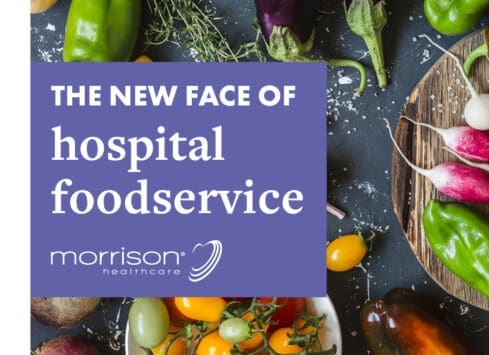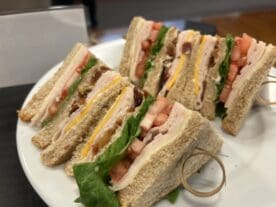How to Safely Serve Patients During a Pandemic
Healthcare looks different today. There are increasing budgetary and operational challenges amid a global pandemic response. As a result, organizations around the country are looking for stability. This search for the next normal has led hospitals to embrace creativity and revise expectations, while keeping the patient at the center of the process. Moving forward, we are now getting a good look at the New Face of Healthcare Food and Nutrition Services.
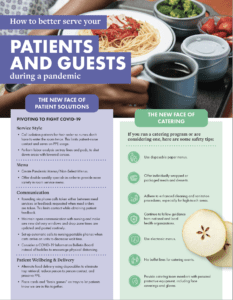
When patients enter a hospital, they have expectations about foodservice. The COVID-19 pandemic response has created challenges but not alleviated patient expectations. That means hospital food and nutrition services operations must develop new best practices to meet the changing landscape. By meeting patient expectations and delivering excellent nutrition, hospitals can safeguard their satisfaction scores and reimbursement rates, while continuing to promote wellness and healing.
Over the past few months, Morrison Healthcare has studied the market and invested in research to get a better understanding of the current situation. These learnings have come together in the form of new best practices and guidelines that can lead to success for hospital food and nutrition services operations. Morrison previously looked at the next normal for hospital cafés and cafeterias. Now, we are sharing our recommendations on patient food and nutrition services.
Service
Service matters. How food is served to patients can make a big difference in the patient’s experience and the overall healing process. Through creative problem solving, Morrison has created new options and best practices that bring efficiency to the service and labor management side of operations.
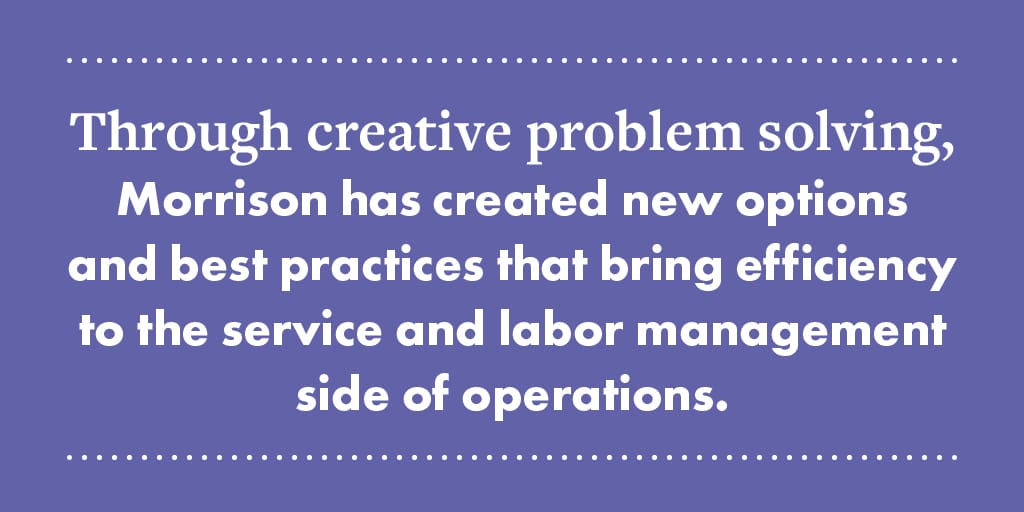
- Food ordering—Instead of sticking to the same methods for food ordering, look to alternatives. For instance, call isolation patients for their orders so nurses don’t have to enter the room twice. This limits patient/nurse contacts and saves on PPE usage. In addition, this allows patients to have input into their meals instead of receiving a non-select tray, improving patient satisfaction and preventing uneaten meals.
- New call center processes—An offsite call center can streamline operations. The National Performance Center is a new service offered by Compass One Healthcare that has led to dramatic increases in efficiency and delivered cost savings to clients. The dedicated call center makes sure patients receive the right nutrition, while freeing up the onsite associates to prepare and deliver meals.
Resource analysis—Take a look at how teams are allocating their time. There could be the need to temporarily shut down certain areas due to lowered census. A thoughtful approach to your staff resources can make a big difference financially for an organization.
Menu
Menu selection is a critical area of foodservice. Patients need food that nourishes their body and soul. That means a focus on taste, but if revenue is declining during a pandemic, it may be time to take a look at the menu.
Special menus—Look for opportunities to create menus that fit your unique needs at the moment. The pandemic menu doesn’t have to be a long-term feature, instead it needs to meet the needs of the patient and the facility for the duration of the pandemic response.
Room service—Offering specials can be a good way to increase variety to the in-room service menu. Double weekly specials have proved effective in many markets.
Communications during a pandemic response
- Communication is critical during a pandemic response. We’ve discussed the importance of communication with your internal and external audiences during a crisis. Hospitals need to make sure patients understand their options, are receiving all relevant information, and have a voice.
Rounding—Limiting contact can be important in minimizing the spread of the virus. Where applicable, move rounding to phone calls. Look to maximize your time by either scheduling rounding calls between meal services or while orders are being taken.
New processes—Look for opportunities to automate regular communication to create consistency and efficiency. For instance, setting up automatic calls to nursing portable phones when carts arrive on the unit can decrease wait times.
New touchpoints—Look to create new touchpoints between nursing and food and nutrition services. With changing schedules and processes, it is important to communicate the latest information to nursing since they are the frontline of patient care. Virtual coffee sessions or a Pandemic Planning Newsletter are effective ways to reach this audience.
Patient & Nurse Wellbeing
In healthcare, patient wellness is at the heart of everything. We also need to take care of the people who care for patients. Nurses have a challenging job. Food and nutrition services can help nurses and alleviate some of the stress and time constraints they face. By being intentional and empathetic in our planning, we can make a difference in the patient and nurse experience.
Disposables—With alternate food delivery processes, you can limit person-to-person interaction and preserve PPE. By using disposal packaging and utensils, there is no need for tray removal. Even one less point of contact can make a difference in the wellness of a patient. This also makes life easier for nurses who have one less item to occupy their time.
Positive messages—Look for opportunities to boost patient morale with well wishes or thoughtful displays of compassion. Decorating patient trays can be a simple way to lift spirits. Also, playing cards and “brain games” on trays lets patients know we are in this together.
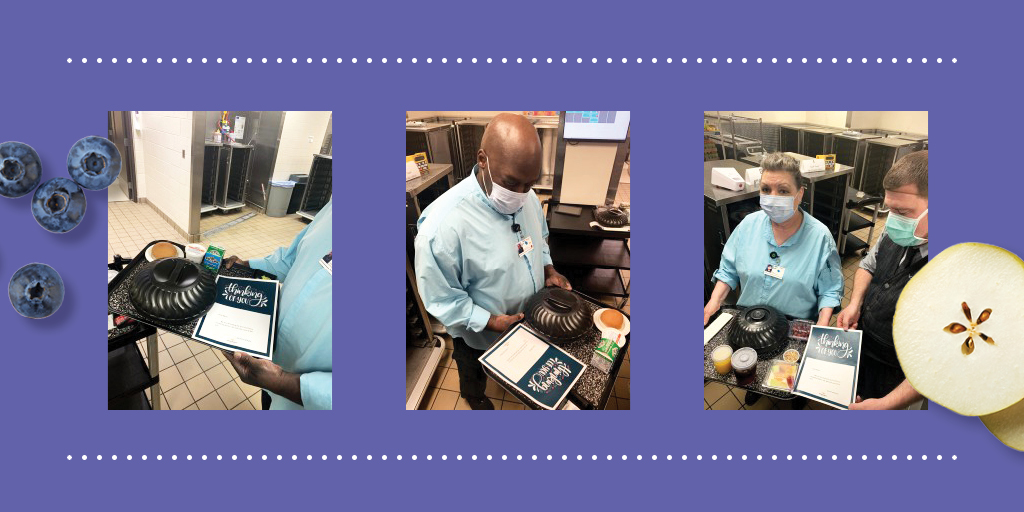
Healthy food options—Hospital foodservice plays an important role in providing a healthy environment for nurses to work and thrive. According to the ANA HealthyNurse® Survey, the average body mass index (BMI) for nurses is 28.5, which falls into the overweight category. By providing healthy dining and snacking options in the café, we can help nurses make good decisions that will positively impact their health. Healthy nurses are better able to care for patients.
Creativity is a powerful tool for hospitals as they search for the new normal. Armed with these best practices, hospital foodservice will be better suited to meet the patient’s needs and expectations. Additionally, there are numerous online resources that can guide hospital administrators to find the right solution. Morrison Healthcare has put together a COVID-19 How-To Guide that lays out best practices and how Morrison is tackling the problem.
